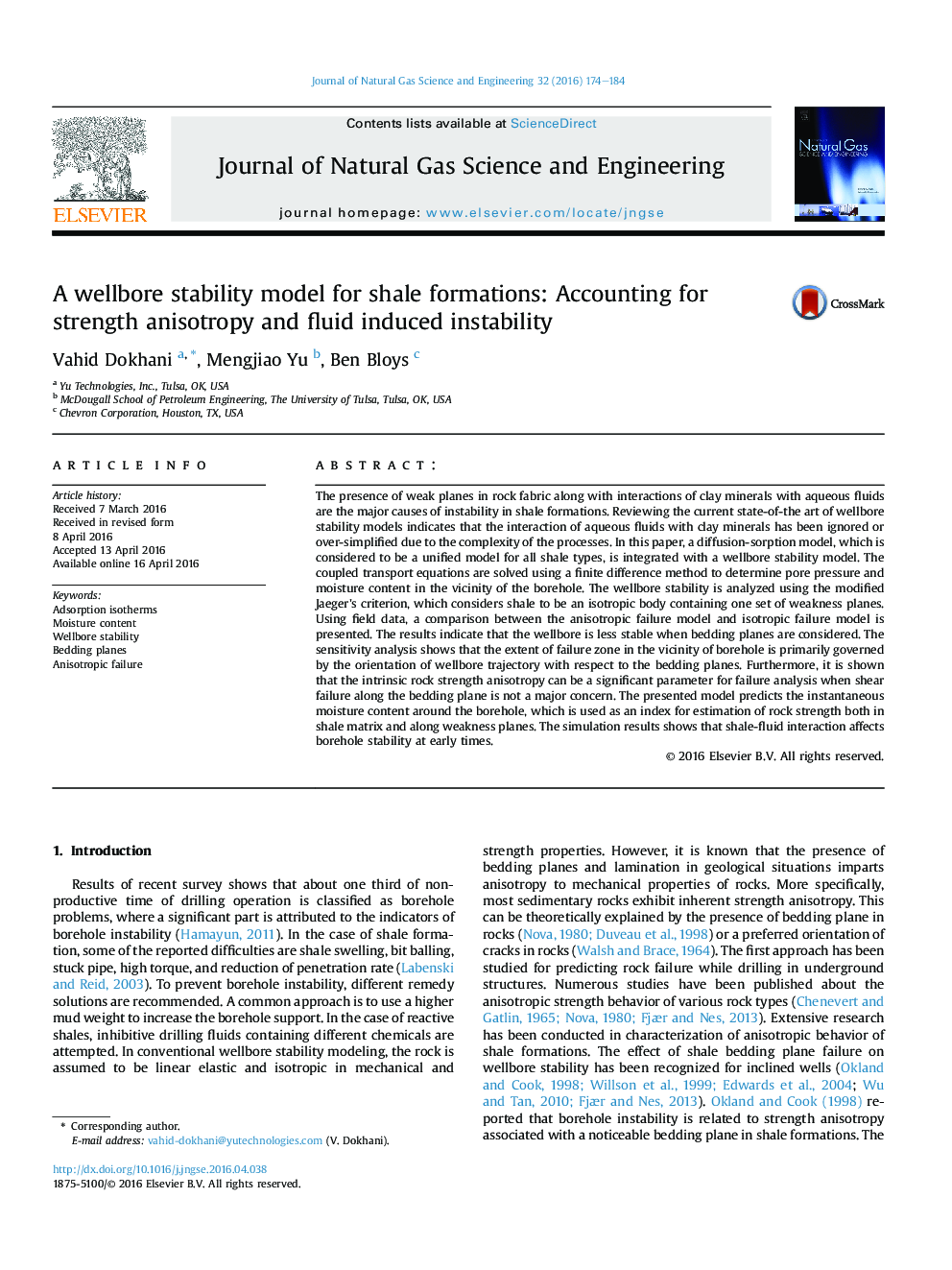| Article ID | Journal | Published Year | Pages | File Type |
|---|---|---|---|---|
| 1757221 | Journal of Natural Gas Science and Engineering | 2016 | 11 Pages |
Abstract
The presence of weak planes in rock fabric along with interactions of clay minerals with aqueous fluids are the major causes of instability in shale formations. Reviewing the current state-of-the art of wellbore stability models indicates that the interaction of aqueous fluids with clay minerals has been ignored or over-simplified due to the complexity of the processes. In this paper, a diffusion-sorption model, which is considered to be a unified model for all shale types, is integrated with a wellbore stability model. The coupled transport equations are solved using a finite difference method to determine pore pressure and moisture content in the vicinity of the borehole. The wellbore stability is analyzed using the modified Jaeger's criterion, which considers shale to be an isotropic body containing one set of weakness planes. Using field data, a comparison between the anisotropic failure model and isotropic failure model is presented. The results indicate that the wellbore is less stable when bedding planes are considered. The sensitivity analysis shows that the extent of failure zone in the vicinity of borehole is primarily governed by the orientation of wellbore trajectory with respect to the bedding planes. Furthermore, it is shown that the intrinsic rock strength anisotropy can be a significant parameter for failure analysis when shear failure along the bedding plane is not a major concern. The presented model predicts the instantaneous moisture content around the borehole, which is used as an index for estimation of rock strength both in shale matrix and along weakness planes. The simulation results shows that shale-fluid interaction affects borehole stability at early times.
Related Topics
Physical Sciences and Engineering
Earth and Planetary Sciences
Earth and Planetary Sciences (General)
Authors
Vahid Dokhani, Mengjiao Yu, Ben Bloys,
